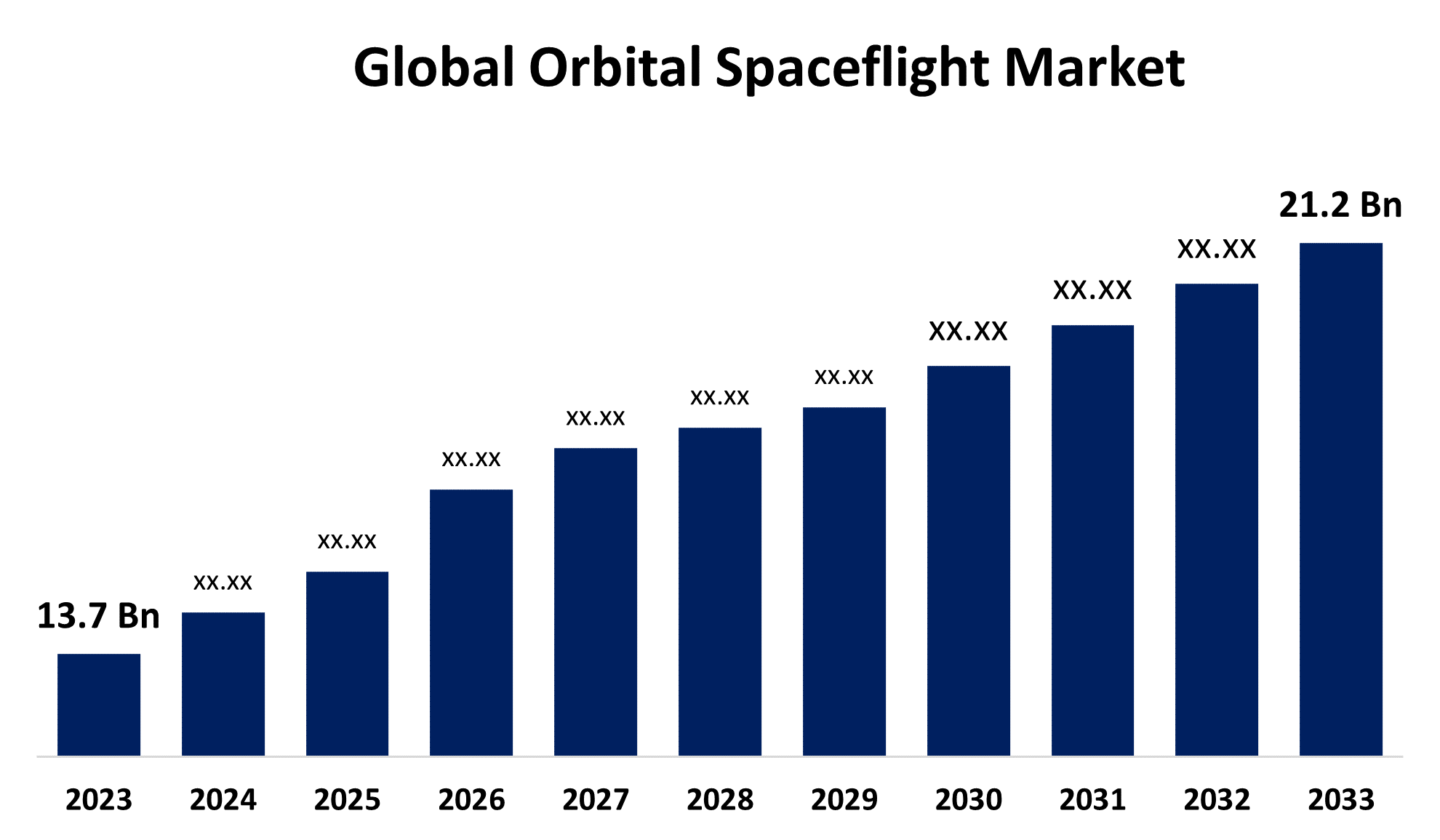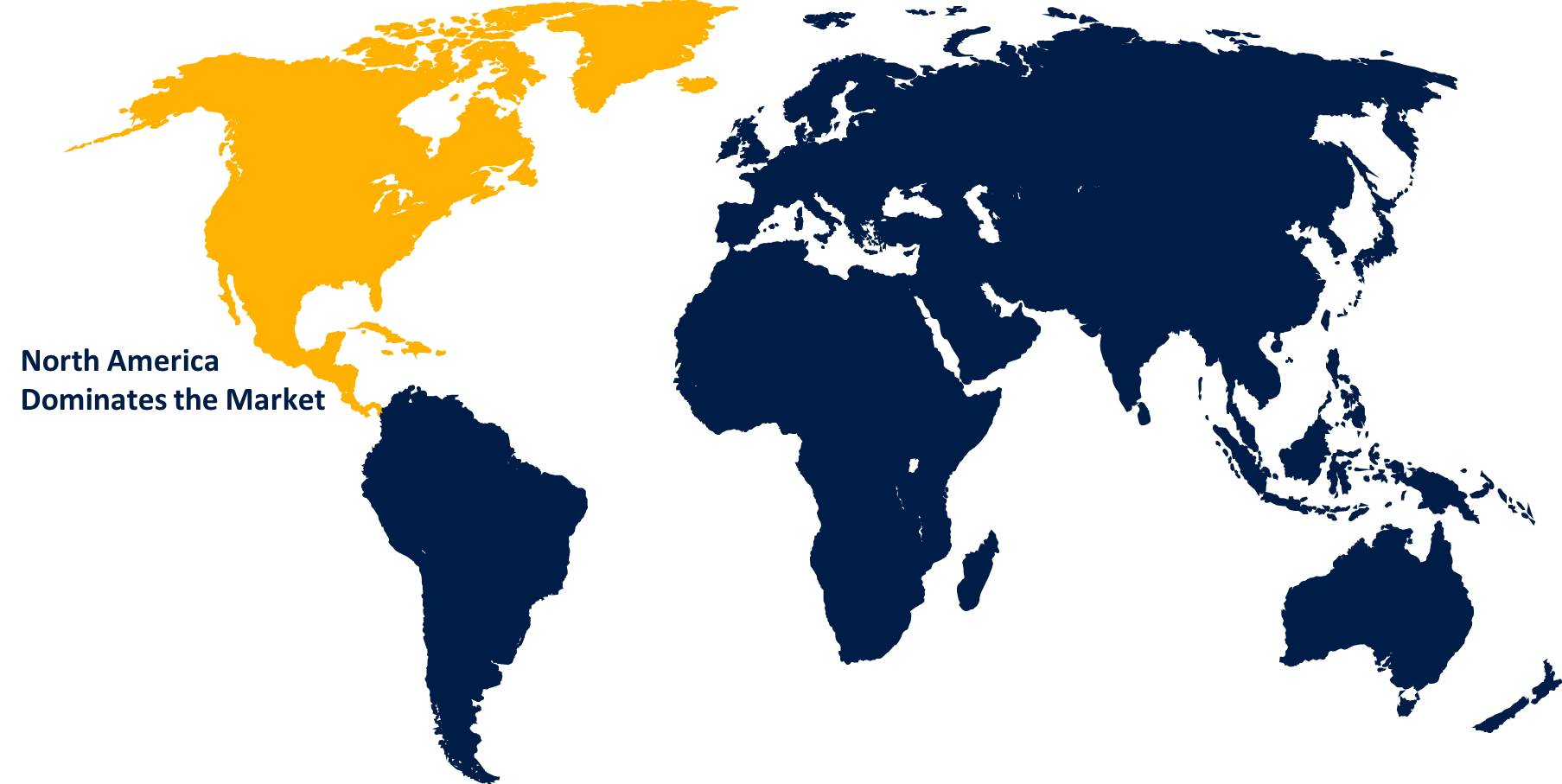Global Orbital Spaceflight Market Size To Worth USD 21.2 billion by 2033 | CAGR Of 4.46%
Category: Aerospace & DefenseGlobal Orbital Spaceflight Market Size To Worth USD 21.2 billion by 2033
According to a research report published by Spherical Insights & Consulting, the Global Orbital Spaceflight Market Size to grow from USD 13.7 billion in 2023 to USD 21.2 billion by 2033, at a Compound Annual Growth Rate (CAGR) of 4.46% during the forecast period.

Get more details on this report -
Browse key industry insights spread across 200 pages with 120 Market data tables and figures & charts from the report on the " Global Orbital Spaceflight Market Size By Range [Low Earth Orbit (LEO), Medium Earth Orbit (MEO) and Geostationary Orbit (GEO)], By Spacecraft Type (Orbital, Rover, Lander), By Region, And Segment Forecasts, By Geographic Scope And Forecast to 2033." Get Detailed Report Description Here:https://www.sphericalinsights.com/reports/orbital-spaceflight-market
In the space sector, commercial entities were becoming more prevalent than merely government organisations. This shift led to the emergence of numerous commercial companies offering satellite placement, space tourism, orbital launch services, and other space-related services. Technological developments were driving down the cost of launching payloads into orbit, particularly in the field of reusable rocket technology, which was spearheaded by commercial enterprises. The decline in launch costs has made space more accessible to a wider range of customers, including small satellite operators, academic institutions, and commercial businesses. International cooperation in space exploration and utilisation has increased as a result of partnerships between government space agencies, for-profit companies, and international organisations. These partnerships have stimulated innovation and raised the potential for space operations.
Orbital Spaceflight Market Value Chain Analysis
Spaceflight technologies, including propulsion systems, satellite components, launch vehicles, and space habitats, are researched and developed during the research and development (R&D) phase. As part of manufacturing and assembly, spacecraft, satellites, launch vehicles, and related components are produced. Satellites and spacecraft are among the payloads that are launched from Earth into space by launch services. Satellites and spacecraft require operation and maintenance once they are in orbit. This covers talking, gathering information, navigating, and keeping an eye on things. Space applications include a variety of applications including national security, scientific research, telecommunications, Earth observation, and navigation that make use of data and services from satellites and spacecraft. The construction and maintenance of launch pads, spaceports, ground stations, and other infrastructure are included in infrastructure and support services.
Orbital Spaceflight Market Opportunity Analysis
The demand for satellite-based services such as navigation, Earth observation, and telecommunications is steadily rising, prompting businesses to invest in deploying large constellations of small satellites to enhance service reliability and achieve global coverage. This trend presents opportunities for companies operating in satellite manufacturing, launch services, ground segment infrastructure, and satellite operations sectors. Additionally, the commercial space station industry is gaining momentum as the International Space Station (ISS) approaches the end of its operational life. These stations offer platforms for space travel, manufacturing, scientific research, and in-orbit maintenance, providing opportunities for companies involved in space station construction, module manufacturing, crew transportation, and space-based research. Furthermore, in-orbit servicing capabilities, such as satellite assembly, refueling, and repair, offer opportunities to extend the operational lifespan of existing satellites and enable new space missions.
Programmes for space exploration must launch satellites, spacecraft, and scientific instruments into orbit or beyond. The need for the launch services provided by for-profit launch businesses rises as a result. As more countries and organisations participate in space exploration, there is an increasing demand for launch services, which is beneficial for companies who produce and run launch vehicles. Space exploration projects expand the market for space-related products and services by creating new opportunities for satellite manufacturers, spacecraft suppliers, ground segment providers, and space infrastructure developers. The market is expanding as a result of the growing demand for space-based services including telecommunications, Earth observation, and navigation that coincide with space exploration efforts.
Construction and operation of space missions, including satellite launches, spacecraft development, and space exploration programmes, require substantial budget. In the space industry, both established businesses and newcomers may face challenges due to high development costs and limited funding alternatives. If launch infrastructure, such as launch pads, ground support equipment, and range facilities, becomes more scarce, the market for orbital spaceflight could expand more slowly. To accommodate the increasing need for space launches and support the growth of commercial space activities, it is necessary to construct new launch sites, renovate existing infrastructure, and increase launch capacity. The market for orbital spaceflight is facing significant challenges because to the large amount of space debris, which increases the risk of accidents and damage to spacecraft.
Insights by Range
The low earth orbit (LEO) segment accounted for the largest market share over the forecast period 2023 to 2033. The advancements in CubeSat technology and satellite miniaturisation have reduced the initial barriers to low-Earth orbit satellite deployment. Because small satellites and CubeSats are becoming more and more affordable for a range of applications, including commercial services, technology demonstration, and scientific research, there is an increasing demand for launch services to low-Earth orbit (LEO). LEO is an ideal orbit for Earth observation and remote sensing projects since it is low in the atmosphere and close to Earth. Satellites in low Earth orbit can record meteorological trends, monitor environmental changes, capture high-resolution pictures, and assist with relief efforts in the event of a disaster. Due to the growing demand for Earth observation data for applications in agriculture and urban planning, the LEO segment is growing.
Insights by Spacecraft Type
The orbital segment is dominating the market with the largest market share over the forecast period 2023 to 2033. The primary purpose of orbital spaceflight is to send satellites into various orbits, including low Earth orbit (LEO). The increased demand for satellite-based services including navigation, Earth observation, telecommunications, and remote sensing has led to an increase in satellite placement missions. Orbital spaceflight is critical to space exploration programmes like crewed voyages to the International Space Station (ISS), robotic exploration of other planets and celestial bodies, and space science research. Government space agencies, commercial companies, and international collaborations are driving the expansion of space exploration missions and operations. Because companies are pursuing a range of commercial endeavours in space, the market for orbital spaceflight is growing as a result of the commercialization of space.
Insights by Region

Get more details on this report -
North America is anticipated to dominate the Orbital Spaceflight Market from 2023 to 2033. The United States leads the world in orbital spaceflight because to its extensive history of space exploration and the vibrant ecosystem of government agencies, commercial companies, and academic institutions that support innovation. NASA, the nation's space agency, is crucial to the development of science, technology, and space exploration. North America is a centre for technological research and satellite production, with North American businesses leading the industry in both areas. These companies design, build, and launch a wide range of satellites for use in communication, science, national security, and Earth observation. Advanced technology developed in North America is driving innovations in satellite architecture, on-board instruments, and propulsion systems.
Asia Pacific is witnessing the fastest market growth between 2023 to 2033. Several Asia-Pacific countries are emerging as space powers with their ambitious space exploration programmes and satellite deployment schemes. Chinese, Indian, Japanese, and South Korean space technology has advanced significantly, especially in satellite launches, lunar exploration, and space technology development. Satellite-based applications like remote sensing, navigation, Earth observation, and telecommunications are becoming increasingly necessary in the Asia-Pacific area. Satellite data and services are being used by governments, corporations, and academic institutions to track environmental changes, promote economic growth, and address a range of societal problems.
Recent Market Developments
- In June 2022, a formal agreement for launch services was signed by Isar Aerospace and D-Orbit, a pioneer in space infrastructure. D-Orbit's ION satellite carrier will be placed into sunsynchronous orbit in 2023 when the company's Spectrum rocket, intended for small and medium-sized satellites and satellite constellations, is launched from its launch facility in Andoya, Norway.
Major players in the market
- Northrop Grumman Innovation Systems
- Blue Origin
- Scaled Composites
- SpaceX
- The Spaceship Company
- Sierra Nevada Corporation
- ARCA Space
- PD Aerospace
- Boeing
- Copenhagen Suborbitals
Market Segmentation
This study forecasts revenue at global, regional, and country levels from 2023 to 2033.
Orbital Spaceflight Market, Range Analysis
- Low Earth Orbit (LEO)
- Medium Earth Orbit (MEO)
- Geostationary Orbit (GEO)
Orbital Spaceflight Market, Spacecraft Type Analysis
- Orbital
- Rover
- Lander
Orbital Spaceflight Market, Regional Analysis
- North America
- US
- Canada
- Mexico
- Europe
- Germany
- Uk
- France
- Italy
- Spain
- Russia
- Rest of Europe
- Asia Pacific
- China
- Japan
- India
- South Korea
- Australia
- Rest of Asia Pacific
- South America
- Brazil
- Argentina
- Rest of South America
- Middle East & Africa
- UAE
- Saudi Arabia
- Qatar
- South Africa
- Rest of Middle East & Africa
About the Spherical Insights & Consulting
Spherical Insights & Consulting is a market research and consulting firm which provides actionable market research study, quantitative forecasting and trends analysis provides forward-looking insight especially designed for decision makers and aids ROI.
Which is catering to different industry such as financial sectors, industrial sectors, government organizations, universities, non-profits and corporations. The company's mission is to work with businesses to achieve business objectives and maintain strategic improvements.
CONTACT US:
For More Information on Your Target Market, Please Contact Us Below:
Phone: +1 303 800 4326 (the U.S.)
Phone: +91 90289 24100 (APAC)
Email: inquiry@sphericalinsights.com, sales@sphericalinsights.com
Contact Us: https://www.sphericalinsights.com/contact-us
Need help to buy this report?